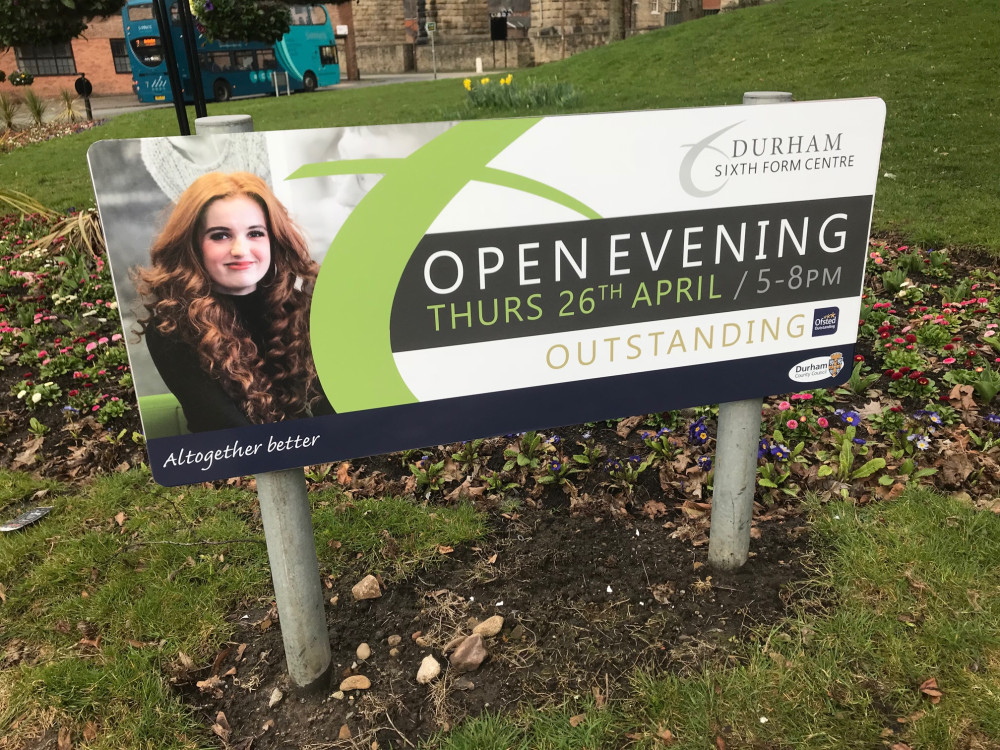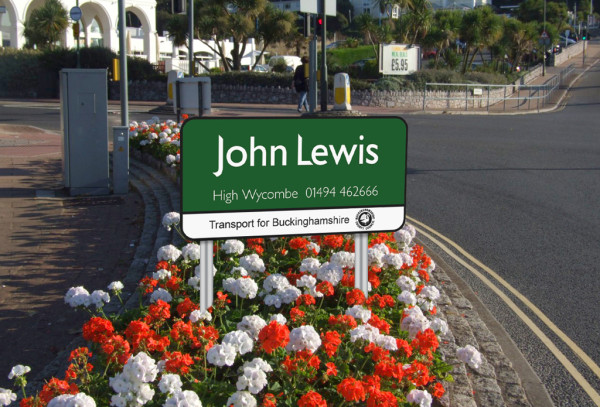Advertise on a Roundabout
High-Impact Roadside Advertising Solutions
Advertising on roundabouts can offer several unique advantages for businesses looking to reach local and passing audiences.
Watch our short video on roundabout advertising:
Why Roundabout Advertising Works
Roundabout Advertising Frequently Asked Questions
Does Roundabout Advertising Work?
Yes, roundabout advertising is highly effective for brand visibility. In the UK, roundabouts experience high daily traffic; for example, a busy roundabout can see over 40,000 vehicle movements daily. This provides continuous, 24/7 exposure, reinforcing brand recognition and targeting local communities effectively.
How do I advertise on the roundabout near me?
- Contact us with your ideal location.
- We'll then identify available locations and find something that best fits what you're looking for.
- We'll work with you to get the design up to spec.
- We'll apply with the proposed designs.
- Pay the required fee and finalise a contract.
- We'll then collaborate with approved designers to install compliant signage.
How much does roundabout advertising cost?
Roundabout advertising costs vary depending on a number of factors, including:
- The number of sites being booked
- The predicted audience delivery figures
- The duration of the advertising campaign
Based on your target audience and geographical area we can provide you with a fully costed proposal to meet your advertising objectives and fit with your budget.
Where can I advertise on roundabouts near me?
Roundabout advertising is subject to agreement by the Local Council in any given area. Roundabout advertising is only available where Council permission has been granted. More and more local Councils are implementing roundabout advertising as it is a valuable source of revenue for them, so it is highly likely that there will be options in your target area.
What are the benefits of roundabout advertising?
Roundabout advertising is a cost-effective, extremely effective and trusted solution for building a local brand presence, with repeated exposure (generally daily) increasing brand recall. It gives the ability to target local (and regional) audiences and helps build a reputation in the local community.
What is Roundabout advertising?
Roundabout advertising is more comprehensive than it sounds. It refers to the practice of placing advertisements on or around roundabouts and traffic intersections that use circular roads to manage traffic flow. These ads are strategically positioned to capture the attention of drivers, pedestrians, and cyclists passing through or around the roundabout.
There are several ways roundabouts can be used for advertising, depending on the location, budget, and desired impact. Common formats include:
1. Billboards or Signage Around the Roundabout
Perimeter Signage:
Large, traditional billboards or smaller signs can be placed along the roadways leading to or around the roundabout, ensuring visibility as vehicles approach or exit.
Traffic Light Ads:
Digital or static ads may be displayed on traffic signals or poles near the roundabout, using locations guaranteed to be visible to drivers waiting at red lights.
2. Centre Island Advertising
Central Roundabout Signs:
Some roundabouts have a large central island, which offers space for signage, banners, or even larger artistic advertisements. These ads are highly visible as they stand out during the traffic flow.
Sculptural/Artistic Installations:
In some cases, advertisers may opt for creative, sculptural installations that serve as both artwork and advertisement. This can be an eye-catching way to integrate a brand into the community.
3. Digital Screens and LED Displays
Electronic Billboards:
Digital billboards or screens can display rotating ads in larger roundabouts or more urbanised areas. They offer the flexibility of changing content and promoting multiple messages or brands.
Dynamic Ads:
Some roundabout advertising can take advantage of technology by using LED screens that change based on time of day or audience demographics, such as targeting commuters in the morning and evening.
How does Roundabout Advertising work?
Roundabout advertising involves placing promotional content (such as signs, banners, digital displays, or sculptures) on or around a roundabout to capture the attention of drivers, pedestrians, and cyclists passing through. Roundabouts are traffic junctions where roads form a circular route around a central island. They are often located in high-traffic or highly visible areas, and advertising in such locations can be a highly effective way to increase local visibility and brand awareness.
Here’s a quick rundown on the Roundabout Advertising Process:
1. Choosing the Right Roundabout
The location of the roundabout is one of the most important factors determining the effectiveness of the ad. Considerations include:
Traffic Volume:
Roundabouts located at busy intersections, near major roads, or in urban centres typically have high traffic flow, ensuring your ad is seen by many people. High-traffic roundabouts are ideal for gaining maximum exposure.
Local Demographics:
Some roundabouts serve primarily local traffic, while others may attract commuters or tourists. Understanding the area's demographics can help businesses tailor their ads to the right audience.
Proximity to Key Landmarks:
Roundabouts near shopping centres, entertainment districts, public transport hubs, or residential areas can be highly effective for local businesses or events.
Visibility:
Please ensure the roundabout is well-positioned so that ads will be visible to drivers and pedestrians, especially those waiting at lights or pedestrian crossings.
2. Ad Formats and Campaign Goals
Advertisers have a range of options for structuring their campaigns based on what they want to achieve:
Brand Awareness:
Roundabout ads are excellent for building brand awareness. Large, visually striking signs, logos, or creative sculptures can help a brand get noticed and remembered by a broad audience.
Local Promotion:
Sponsoring a roundabout can increase local businesses' visibility among community members and drive foot traffic to local stores or services.
Event or Seasonal Ads:
Roundabout advertising can promote specific events, seasonal sales, or local festivals. Timely ads that correspond with public events can attract attention and increase engagement.
Public Service Announcements:
Local governments and non-profits may use roundabout advertising to spread public safety messages, raise awareness about environmental issues, or promote community initiatives.
3. Effectiveness and ROI
Roundabout advertising can be effective for:
Brand Visibility:
Because roundabouts are usually located at busy intersections with a high volume of passing traffic, advertising here guarantees substantial exposure, which can be particularly valuable for local businesses or brands with a regional focus.
Repeat Exposure:
Many people regularly pass through the same roundabouts, which means they are repeatedly exposed to the same ad. This can enhance brand recall over time.
Local Engagement:
For businesses targeting a specific locality, roundabout ads provide an excellent opportunity to engage the local community and generate interest in nearby products or services.
However, measuring the return on investment (ROI) from roundabout advertising can take time and effort. For local businesses, tracking through increased foot traffic, website visits, or phone inquiries is typically easier, mainly if the ad includes a call to action (e.g., a special offer, event promotion, or website link).
In summary, roundabout advertising leverages the high visibility of roundabouts to deliver targeted messages to large numbers of people. It's an impactful way to increase brand awareness, promote local events, or enhance a brand’s connection to the community, all while offering flexible advertising formats and cost structures.
The Key benefits of Roundabout Advertising:
1. High Visibility
Constant Flow of Traffic:
Roundabouts are typically located in high-traffic areas, making them prime spots for visibility. Vehicles, cyclists, and pedestrians constantly pass through or around them, increasing exposure to the advertising messages.
Driver Focus:
Drivers navigating roundabouts tend to focus on the road and surrounding environment, making it more likely they will notice and engage with ads placed in strategic locations around the roundabout.
2. Attention-Grabbing Location
Unavoidable Presence:
Unlike ads on motorways or billboards along roadsides that may need to be addressed or noticed, roundabout ads are almost unavoidable for drivers, especially in the roundabout's centre or at the entry/exit points. This makes them an obvious point of interest.
Immobility of Traffic:
Traffic flow at roundabouts tends to be slower than on roads, which gives drivers more time to notice and absorb the advertisement.
3. Local Targeting
Geographically Specific:
Roundabout advertising targets a local or regional audience well. As roundabouts are typically situated at key intersections in towns or suburbs, the audience often consists of residents or people frequently travelling through the area.
Strategic Placement:
By choosing the right roundabout, businesses can target specific demographic groups depending on the location’s proximity to residential areas, commercial centres, or schools.
4. Cost-Effective
Relatively Low Overheads:
Roundabout advertising can be more affordable than other forms of advertising, such as digital ads, TV, or radio. The cost may vary depending on the location. Still, it generally offers a more budget-friendly option for local businesses, especially compared to large-scale billboards or urban advertising placements.
Longevity:
Ads on roundabouts may remain in place for extended periods, offering ongoing exposure for a one-time investment, which can provide long-term visibility without the need for frequent updates or changes.
5. Non-Intrusive
Eco-Friendly and Aesthetic Appeal:
Roundabout ads can be integrated into landscaping or other aesthetic features, enhancing the visual environment without disrupting it. Compared to large, intrusive billboards, this can lead to less negative public perception.
Blend with Traffic Flow:
While visible, roundabout ads often don’t disrupt the traffic flow, making them an unobtrusive but effective form of marketing.
6. Diverse Advertising Formats
Flexibility in Design:
Roundabout advertising can take many forms, from digital screens to signage around the circumference or in the roundabout's centre. Creative use of these formats can increase engagement and make ads stand out.
7. Limited Competition
Less Saturation:
Depending on the location, roundabout advertising may face less competition than other traditional or digital advertising types. Since not every business uses this form of advertising, it can make the ad stand out more.
8. Improved Brand Awareness
Repeated Exposure:
As drivers and pedestrians pass by the roundabout frequently, they are repeatedly exposed to the ad, which can lead to better brand recall and recognition. For businesses, this repeated exposure can help reinforce brand messages over time.
Association with Key Locations:
Roundabouts are often at the heart of a city's road network, so placing your ad there can associate your brand with the centrality or importance of that location.
9. Potential for Community Engagement
Local Support and Pride:
Ads that reflect the community or local culture can resonate more deeply with residents. Advertisements that reflect local values or sponsor community-related projects (such as roundabout beautification) can help businesses foster a positive image and greater community engagement.
In summary, advertising on roundabouts offers a combination of high visibility, cost-effectiveness, and local targeting while providing opportunities for creative and non-intrusive ad placements.
How much is it to sponsor a roundabout?
The cost to sponsor a roundabout in the UK can vary widely depending on several factors, such as location, the size of the roundabout, the level of traffic it serves, and the type of sponsorship package you're looking for. Depending on these variables, sponsorship costs can range from a few thousand pounds to tens of thousands annually.

Key Factors Affecting the Cost of Roundabout Sponsorship:
Location
High-Traffic Areas:
Sponsoring roundabouts in busy urban areas or on major roads, such as those near city centres, motorways, or popular tourist destinations, will be more expensive. However, these areas offer higher visibility and more potential for brand exposure.
Smaller or Less-Central Locations:
Due to the lower traffic flow and reduced visibility, roundabouts in suburban, rural, or less-travelled areas may cost significantly less to sponsor.
Size of the Roundabout and Available Space
Large, Prominent Roundabouts:
A roundabout with a large central island or multiple exits may allow for larger signage or more elaborate branding options, which may increase the cost.
Smaller Roundabouts:
The sponsorship cost will likely be lower if the roundabout has limited space or is less prominent.
Type of Sponsorship
Simple Signage or Branding:
This may involve placing a sign or logo at critical points around the roundabout or central island. It is a less expensive type of sponsorship.
Comprehensive Sponsorship:
This might include branding the roundabout with landscaping, a customised design, and long-term commitment. Some sponsors may also incorporate digital advertising, which can raise the price.
Duration of Sponsorship
Short-Term:
A temporary sponsorship (e.g., for an event or seasonal promotion) may cost less than a multi-year agreement.
Long-Term:
Long-term agreements, often 1-3 years, may offer better value and discounts as they provide more consistent exposure.

General Cost Estimates:
Small or Low-Traffic Roundabout:
Costs for sponsorship may start at £3,000 to £10,000 per year for more straightforward signage and branding.
High-Traffic or Central Roundabout:
Sponsorship of a high-traffic roundabout in a busy urban area can range from £10,000 to £50,000 per year or even more, depending on the location and scale of the advertising package.
Comprehensive or High-End Sponsorship:
The cost can rise well beyond £50,000 per year for large-scale projects involving significant signage, landscaping, or digital displays.
Additional Costs to Consider:
Maintenance:
Sponsorship packages may include the cost of maintaining the roundabout's appearance (e.g., landscaping or digital signage maintenance). Some packages may incur an extra charge.
Planning and Installation:
Depending on the complexity of the design, there may be additional fees for installing signs, lighting, or other features.
Advertising on Digital Platforms:
If digital screens are used, this could add to the overall sponsorship cost, notably if you include dynamic content that changes over time.
Examples of Sponsorship Packages:
Simple Branding:
In a suburban area, we could sponsor a roundabout with essential signage or a banner for around £5,000 to £15,000 per year.
Corporate Sponsorship:
A national brand looking for prominent visibility might pay £20,000 to £50,000+ per year for a central roundabout on a major road in a metropolitan area, including enhanced design and large-scale branding.

While costs vary, sponsoring a roundabout is generally more cost-effective outdoor advertising than larger billboards or TV ads, especially for businesses targeting local customers.

